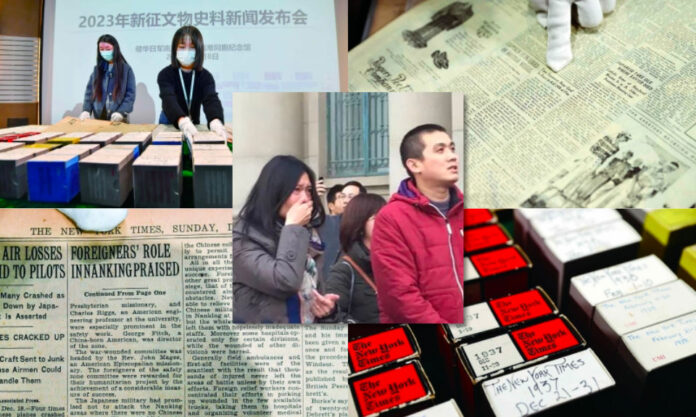With today being the 10th National Memorial Day for the Victims of the Nanjing Massacre, so our City fell silent this morning in memory of the tragedy that began unfolding 86 years ago, while more historical materials documenting the time are revealed.
10 years ago today, on December 13, 2014, as the mournful air-raid sirens wailed through the sky, a woman in Nanjing’s Xinjiekou stopped, stood, covered her face and wept, in that which was the first emotional outburst of the National Memorial Day for the Victims of the Nanjing Massacre.
Despite the name, today is to commemorate and honour all who died during the Second Sino-Japanese War. But observance of this day in fact goes back as long ago as 1996, when Nanjing’s air-defence office began its annual test of the City’s air-raid siren network.
Since 2014, thousands of carefully-selected citizens, including the military, doctors and nurses, government officials and members of the general public, take part in an elaborate yet solemn ceremony, planned and executed to perfection, beginning at 10:00 on 13 December, inside the Memorial Hall of the Victims of the Nanjing Massacre by the Japanese Invaders. The ceremony this morning was no different.
But setting this year apart was the unveiling of new evidence of the atrocities a few day prior, at a press conference on 8 December, as Nanjing Daily has reported.
In particular, the evidence included newspapers donated by Chinese-American Lu Zhaoning, pertaining to the first time that western media had reported on that which became known as the “Hundred Killings”.
This was in reference to the Chicago Tribune’s publishing of an article referencing a report in the Tokyo Nichi Nichi Shimbun that detailed a contest between two Japanese lieutenants to see who could be first to kill 100 Chinese soldiers. In the end, they both did and the two sides tied. After killing 106 people, they agreed a rematch until 2×150 people lay slain.
Then there was the article in The New York Times for 25 January, 1938. That reported on the continued atrocities committed by Japanese troops in Nanjing, saying that Nanjing lay in a state of anarchy.
Elsewhere and earlier, on 18 December, 1937, the San Francisco Chronicle reposted a report by an American journalist who was one of the first foreigners to leave the capital since the Japanese attack began.
That journalist reported the last thing they saw was 300 Chinese mercilessly executed in front of the river embankment, where corpses were piled up knee high. He added that it was a typical portrayal of the crazy scenes that had played out in Nanjing over those past few days.
Today was the day that we remembered all of this.






